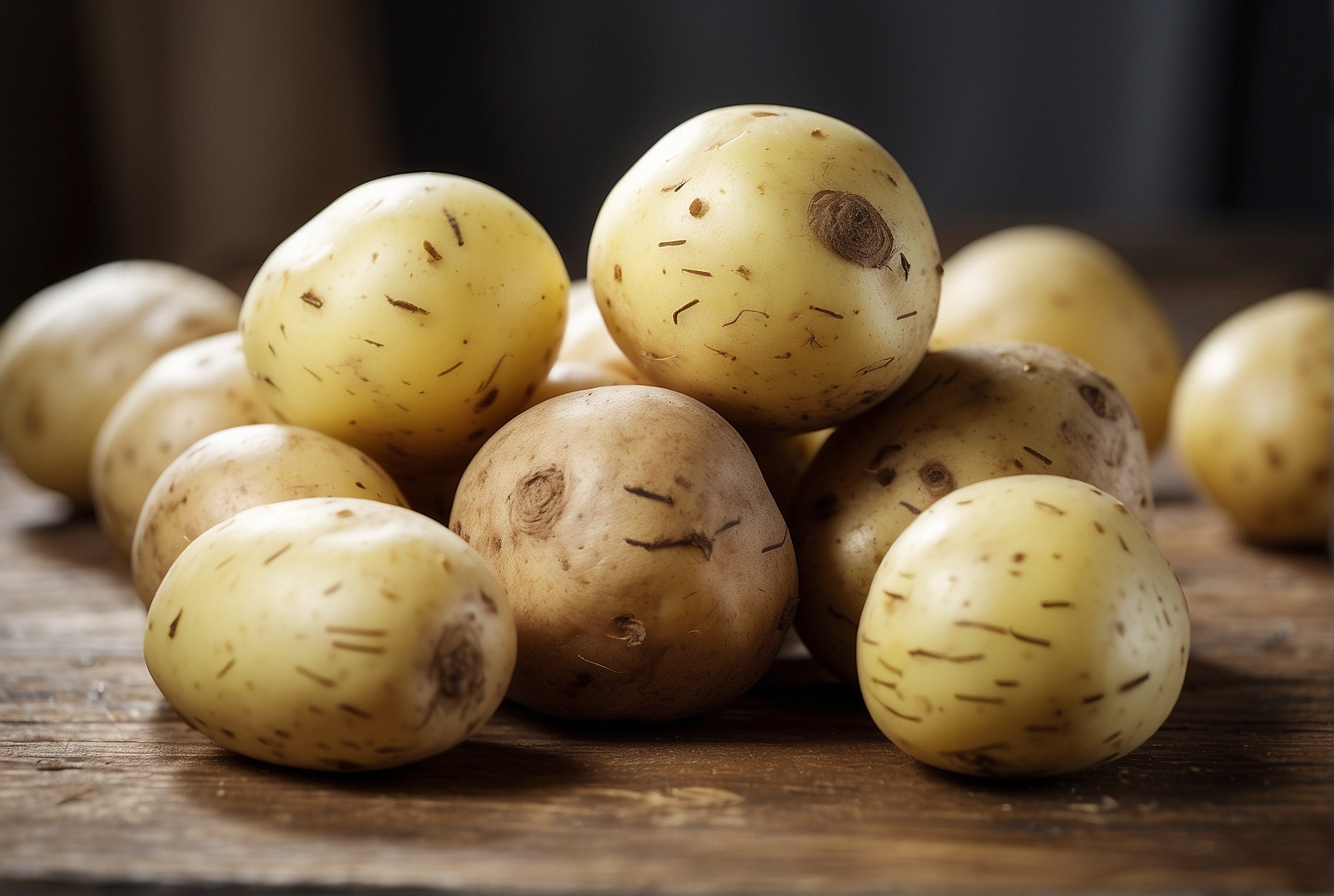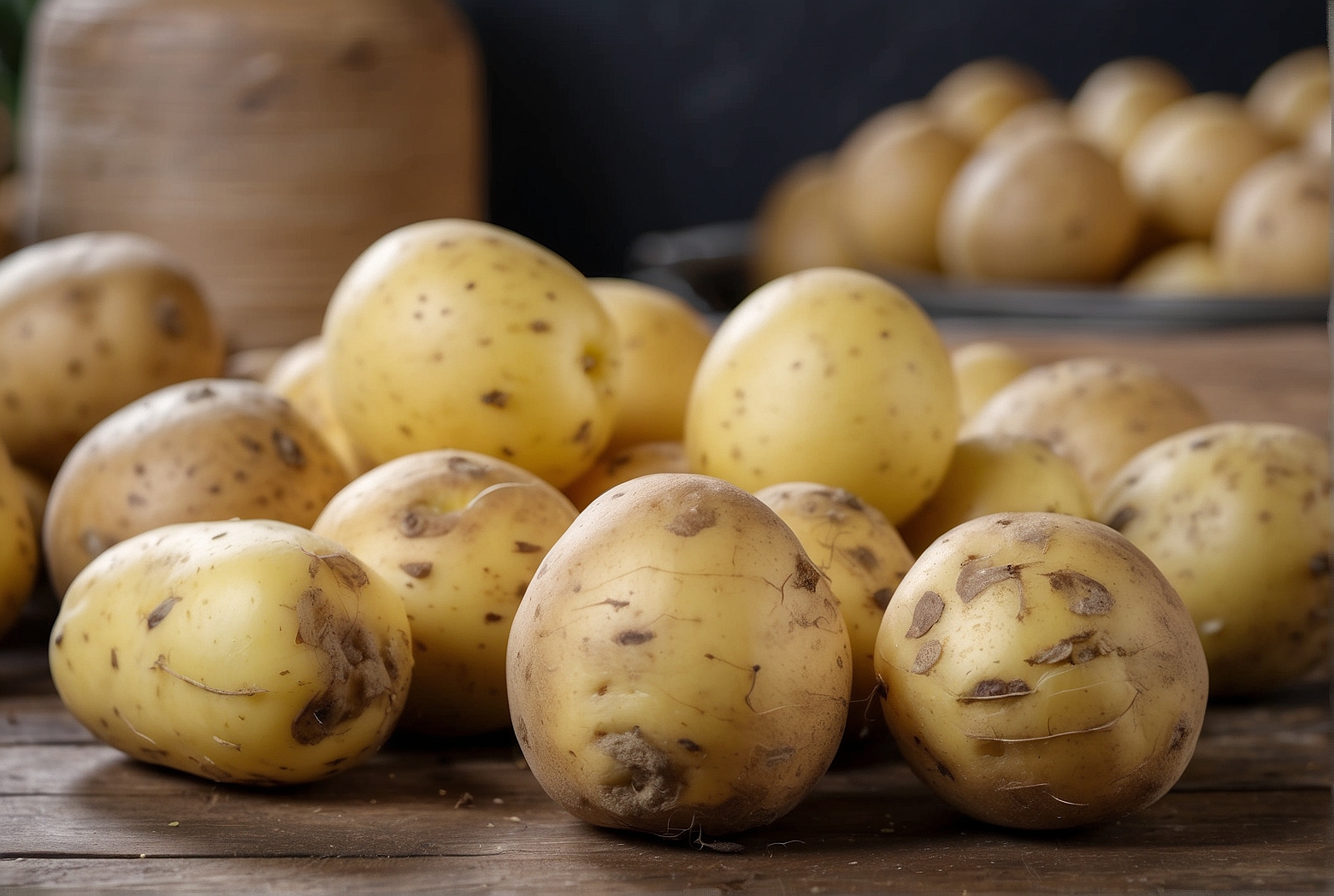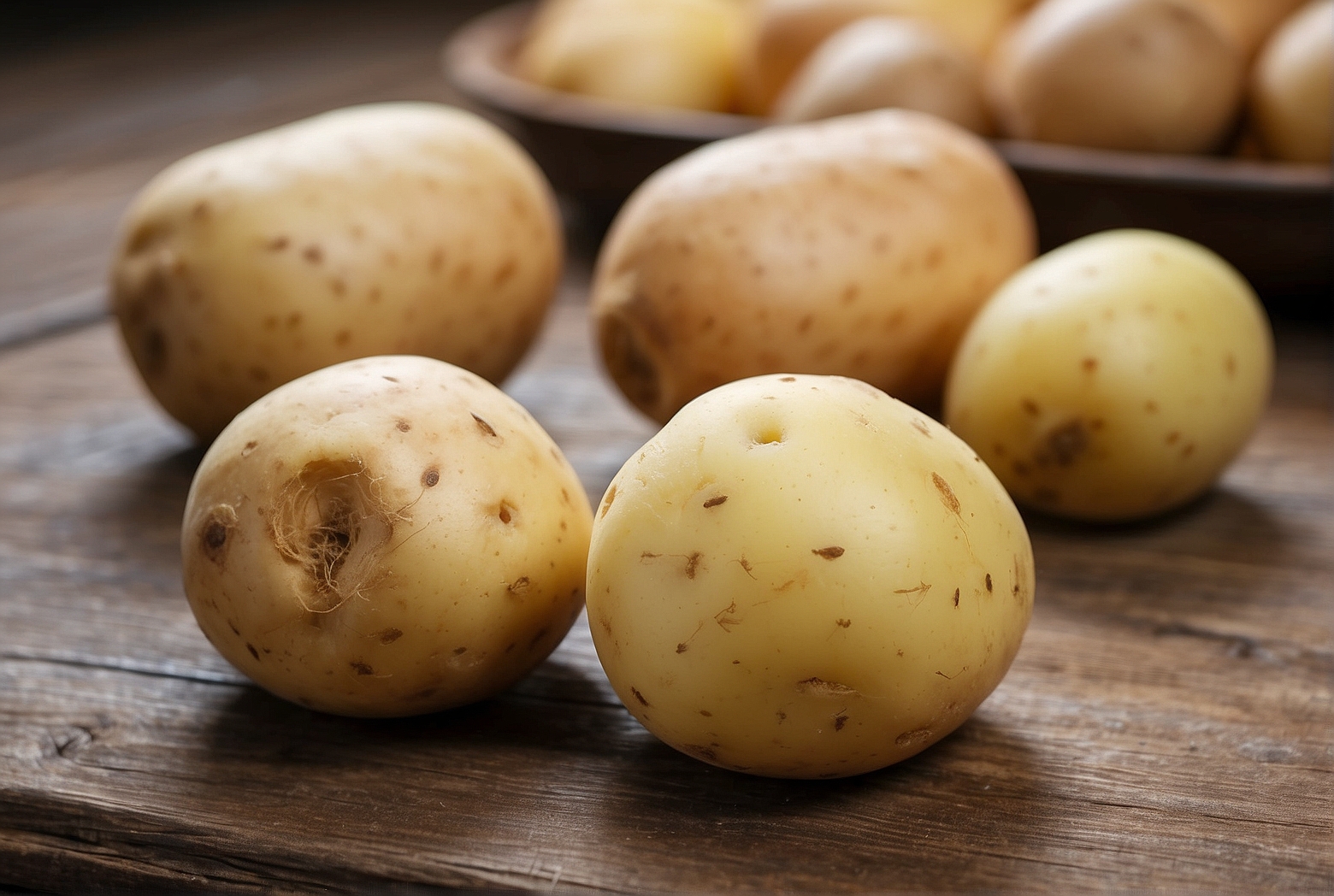Last Updated on April 1, 2024 by Tony Manhart
If you’re a potato enthusiast, then you’ve probably come across the terms “determinate” and “indeterminate” when it comes to German Butterball potatoes. But what do these terms actually mean? Understanding the difference between determinate and indeterminate German Butterball potatoes can help you make informed decisions when it comes to planting, care, and harvesting. In this article, we’ll explore the characteristics of both types and delve into the pros and cons of each, allowing you to choose the perfect variety for your next potato-growing adventure.
Definition
Determinate Potatoes
Determinate potatoes are a type of potato plant that grows to a certain height and then stops growing. They have a predetermined size and shape, and once they reach full maturity, the plant dies back. Determinate potatoes are known for their compact growth habit and are often more suited for smaller garden spaces.
Indeterminate Potatoes
Indeterminate potatoes, on the other hand, continue to grow throughout the growing season and do not have a predetermined size or shape. These potatoes will produce new stems, leaves, and tubers as the season progresses, resulting in a continuous growth cycle. Indeterminate potatoes tend to have more sprawling growth habits and require more space in the garden.
Characteristics
Plant Growth
Determinate potatoes, as mentioned earlier, have a more compact growth habit. They typically grow to a certain height and then stop, with most of their energy directed towards producing tubers. Indeterminate potatoes, on the other hand, continue to grow and produce new stems and leaves throughout the season. Their growth can be more sprawling, making them ideal for larger garden spaces.

Harvesting
Determinate potatoes are generally harvested all at once when the plant reaches maturity. Since the plant dies back after reaching full growth, it’s easier to dig up the entire plant and harvest all the tubers at once. Indeterminate potatoes, on the other hand, can be harvested throughout the growing season. As new tubers are produced, you can choose to harvest them as needed or wait until the end of the season.
Yield
When it comes to yield, determinate potatoes typically produce a higher quantity of tubers per plant. Since their energy is focused on tuber production rather than continuous growth, they tend to have more concentrated yields. Indeterminate potatoes, while they may produce fewer tubers per plant, have the advantage of their extended growing season, which allows for a potentially larger overall harvest.
Storage
In terms of storage, both determinate and indeterminate potatoes can be stored after harvesting. However, due to their differing growth habits, determinate potatoes may be easier to store. Since they are harvested all at once, you can easily sort and store them in a cool, dark place. Indeterminate potatoes, with their continuous growth and harvest, may require more careful sorting and storage to ensure long-term freshness.
Maturity Time
Determinate potatoes tend to have a shorter maturity time. Once they reach their full growth potential, they typically mature relatively quickly. Indeterminate potatoes, on the other hand, have a longer maturity time since they continue to grow throughout the season. This extended growth period allows the tubers to develop fully and results in a potentially larger size.

Planting
Spacing
When planting determinate potatoes, it’s important to provide adequate spacing between the plants. Typically, you should aim for around 12-18 inches between each plant to allow for proper growth and tuber development. Indeterminate potatoes, due to their larger and sprawling growth habit, may require even more spacing, usually between 18-24 inches, to ensure they have enough room to spread out.
Depth
The planting depth for both determinate and indeterminate potatoes is generally the same. You should aim to plant the potatoes at a depth of around 4-6 inches. This depth provides the tubers with enough soil coverage and protection while still allowing the plants to emerge easily.
Soil Type
Potatoes, whether determinate or indeterminate, prefer well-draining soil that is rich in organic matter. Sandy loam or loamy soil types are usually ideal for potatoes as they provide good drainage while retaining enough moisture for healthy growth. It’s important to avoid heavy clay or compacted soils as they can hinder tuber growth and promote diseases.
Watering
Proper watering is crucial for the successful growth of both determinate and indeterminate potatoes. During the growing season, it’s important to keep the soil evenly moist, but not waterlogged. Regular watering, especially during dry periods, helps ensure healthy tuber development. Avoid overwatering, as it can lead to rot and other moisture-related issues.
Maintenance
Fertilizing
Fertilizing plays a vital role in the maintenance of both determinate and indeterminate potatoes. Before planting, it’s beneficial to incorporate well-rotted organic matter into the soil to provide essential nutrients. Once the plants have emerged, a balanced fertilizer high in potassium, like a 10-10-10 or similar formulation, can be applied every four to six weeks to promote tuber development.
Weeding
Regular weeding is essential to keep weeds from competing with the potato plants for nutrients, water, and sunlight. Use a hoe or hand tools to gently remove any weeds that may sprout around the potato plants. Be careful not to damage the potato plants’ shallow root systems while weeding.
Pest and Disease Control
Potato plants, regardless of being determinate or indeterminate, can be susceptible to various pests and diseases. Common pests include potato beetles, aphids, and nematodes, while diseases such as late blight and scab can affect the plants. Regular scouting and the use of organic or chemical controls, as necessary, can help manage these issues and maintain plant health.
Mulching
Mulching can provide numerous benefits for potato plants. It helps conserve soil moisture, suppresses weed growth, and regulates soil temperature. Apply a layer of organic mulch, such as straw or leaves, around the plants to a thickness of about 2-3 inches. Mulching can be especially beneficial for indeterminate potatoes, as their extended growing season may require extra protection and maintenance.
Flavor and Texture
Taste
The flavor of both determinate and indeterminate potatoes can vary depending on factors such as soil composition, growing conditions, and cooking methods. However, German Butterball potatoes, whether determinate or indeterminate, are known for their rich and buttery taste. Their mild nutty flavor makes them a popular choice for various culinary applications.
Cooking Methods
German Butterball potatoes, being versatile in the kitchen, can be cooked in various ways. They are well-suited for boiling, roasting, mashing, or even making French fries. The smooth and creamy texture of these potatoes adds a delightful element to any dish they are used in. Whether you prefer them mashed with butter and cream or roasted with herbs and spices, German Butterball potatoes are sure to please your taste buds.
Texture
German Butterball potatoes have a smooth and creamy texture when cooked. Their flesh is moist and holds together well, making them ideal for mashing or pureeing. The firm yet delicate texture of these potatoes makes them a favorite choice among many cooks and chefs. Whether you want fluffy mashed potatoes or tender roasted potatoes, German Butterballs deliver a satisfying texture every time.
Common Uses
Culinary Applications
German Butterball potatoes, regardless of being determinate or indeterminate, are highly versatile in the kitchen. They can be used in a wide variety of culinary applications, including mashed potatoes, roasted potatoes, potato salads, soups, stews, and more. Their rich flavor and creamy texture make them a favorite choice for many traditional and modern potato-based dishes.
Popular Recipes
There are countless delicious recipes that feature German Butterball potatoes. Some popular options include classic mashed potatoes, crispy roasted potatoes, potato soup, potato salad, and even potato gnocchi. Whether you’re looking for comfort food or gourmet creations, German Butterball potatoes are a fantastic choice to elevate your dishes.
Availability
Seed Availability
German Butterball potato seeds, typically in the form of tubers or seed potatoes, are widely available from various seed suppliers, nurseries, and online stores. You can find them in garden catalogs or order them directly from reputable sources. It’s important to ensure that the seeds are healthy, disease-free, and suitable for your specific growing region.
Commercial Availability
Beyond seed potatoes, German Butterball potatoes are also commercially available in grocery stores and farmers markets, especially during the peak potato-growing season. Their popularity and delicious taste have made them a sought-after variety for both home cooks and professional chefs. Look for fresh German Butterball potatoes in the produce section, and make sure to select firm and unblemished tubers.
Comparative Analysis
Pros and Cons of Determinate Potatoes
Pros:
- Compact growth habit, suitable for smaller gardens or containers
- Higher concentration of tubers per plant, resulting in potentially higher yields
- Easier to harvest since the plant dies back at maturity
- Generally have a shorter maturity time compared to indeterminate potatoes
Cons:
- Limited space for growth and spread
- May require more careful storage due to simultaneous harvest
Pros and Cons of Indeterminate Potatoes
Pros:
- Continue to produce tubers throughout the growing season, resulting in potential for larger overall harvest
- Well-suited for larger garden spaces due to their sprawling growth habit
- Extended growth period allows for potentially larger tuber sizes
- Tubers can be harvested as needed, providing flexibility
Cons:
- Require more space for growth compared to determinate potatoes
- Growing season can be longer, requiring more maintenance and care
Gardening Tips
Choosing the Appropriate Variety
When selecting German Butterball potatoes, consider your specific gardening conditions and requirements. If you have limited space, opt for determinate varieties. If you have ample garden space and prefer a longer harvest period, indeterminate varieties may be the better choice. Consider factors such as your climate, available garden space, and personal preferences when deciding which potato variety to grow.
Proper Storage of Harvested Potatoes
After harvesting your German Butterball potatoes, it’s important to store them properly to ensure their longevity and flavor. Store them in a cool, dark place where the temperature is consistently around 45-50°F (7-10°C). Avoid exposure to direct sunlight or fluctuating temperatures, as they can affect the quality and sprout formation. Regularly check stored potatoes for any signs of spoilage and remove any damaged or decaying tubers promptly.
Conclusion
Understanding the difference between determinate and indeterminate potatoes, specifically in the context of German Butterball potatoes, allows you to make informed decisions when it comes to growing and utilizing these versatile tubers. Both types have their unique characteristics and advantages, and it ultimately comes down to your gardening situation and preferences. Whether you choose determinate or indeterminate German Butterball potatoes, their rich flavor, creamy texture, and culinary versatility will bring delight to your kitchen and dining table. Happy gardening and happy cooking!
Tony Manhart is a passionate gardener who has been tending to gardens for over 20 years. He takes pride in creating beautiful outdoor spaces with plants, trees, and shrubs that can thrive in any environment. He loves to share his knowledge with others and has taught classes on gardening basics and advanced techniques. He is committed to sustainability, using natural and organic methods to create and maintain gardens. He also works with local organizations to create green spaces for communities. When he’s not gardening, Tony enjoys hiking, reading, and spending time with his family.


